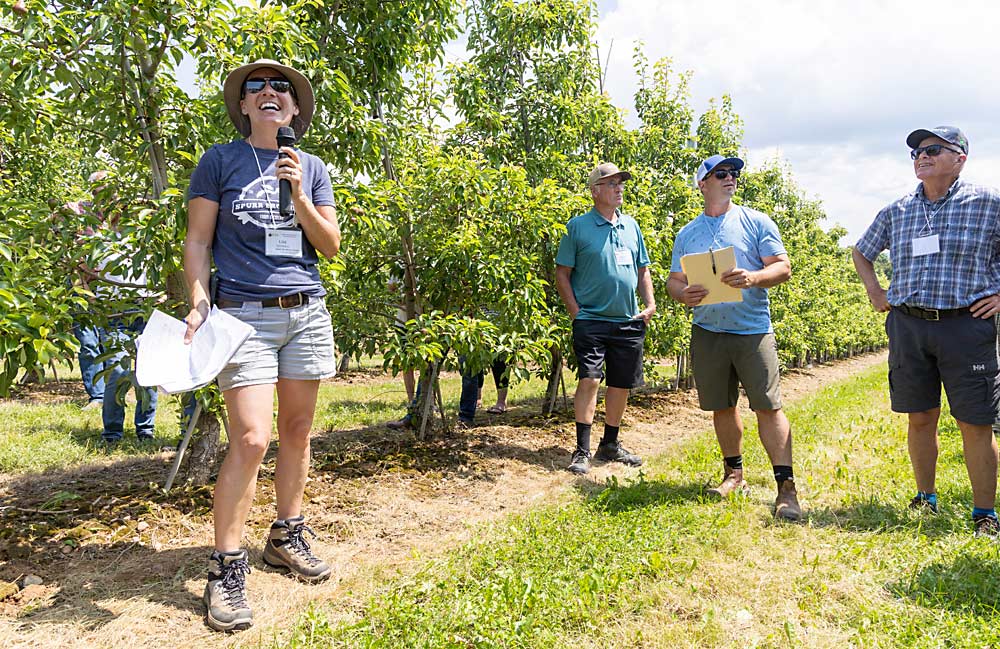
Pears aren’t nearly as common as apples in Nova Scotia, Canada, but at least one grower is making local pears work on a small scale.
During its July tour of Nova Scotia orchards, the International Fruit Tree Association visited Spurr Bros. Farms, which specializes in growing and selling local vegetables and fruits, including its 5 acres of pears, said Lisa Jenereaux, president of the family business.
With the IFTA visitors, and in a subsequent interview with Good Fruit Grower, Jenereaux discussed growing pears in Nova Scotia.
The farm planted its first pear trees in 2012. Jenereaux knew there was demand for local pears in the province and thought they would make a nice addition to the farm’s offerings. The Scotian Gold cooperative packs and markets Spurr Bros. pears to local retailers.
The farm grows Bosc, Harrow Sweet, Cold Snap and Clapp’s Favorite on Old Home by Farmingdale 97 rootstock. The first trees were spaced 6 by 14 feet, but they decided that was a little too wide and planted the rest 5 by 13 feet.
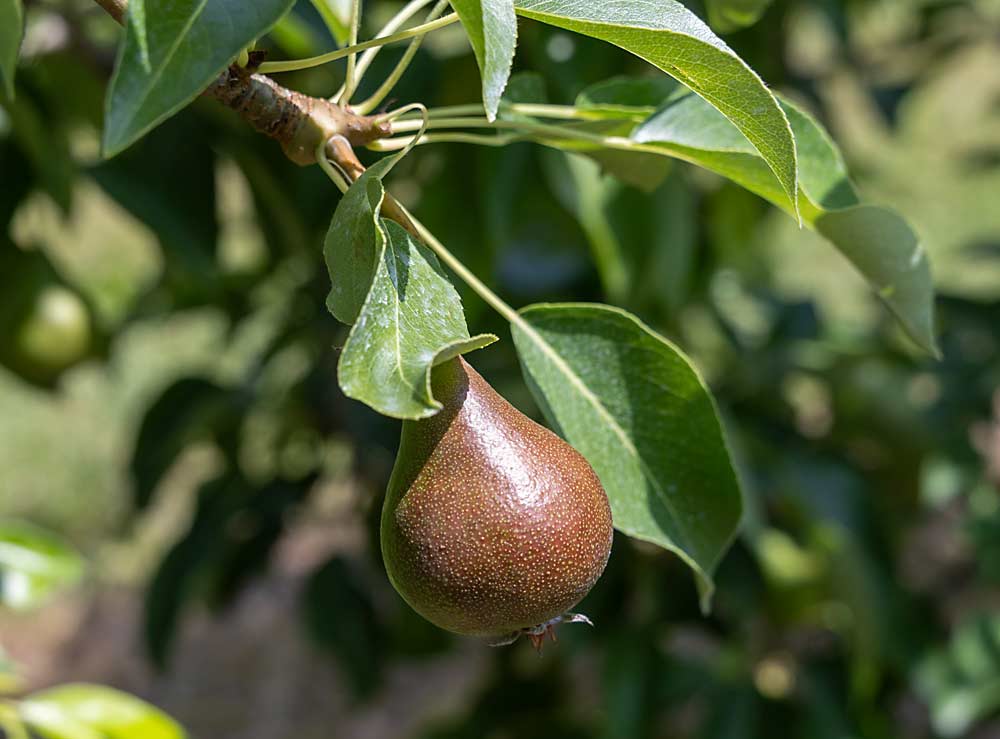
They trained the trees to an in-line V system that splits the pear tree’s excessive vigor into two leaders. In-line Vs create a two-dimensional fruiting wall for efficient management. The trellises consist of wooden posts, metal wires and bamboo canes to guide the leaders. Bamboo breaks down fairly quickly in Nova Scotia’s climate, but pear trees only need the canes for their first few years, Jenereaux said.
One of the challenges with V-trained pears is keeping the strong leader calm so the weak leader can catch up.
“We’re managing to control the heavier-vigor side, but it’s not as uniform as we’d like it to be,” she said.
They consistently root-prune the trees to control vigor, and in the early years they left heavier crops to slow down vegetative growth.
Their best pear crop so far was in 2021, when the trees yielded about 600 bushels to the acre. Bosc, their most profitable variety, yielded about 725 bushels per acre that year.
“I think that’s about as good as we’re going to get here,” Jenereaux told the IFTA audience.
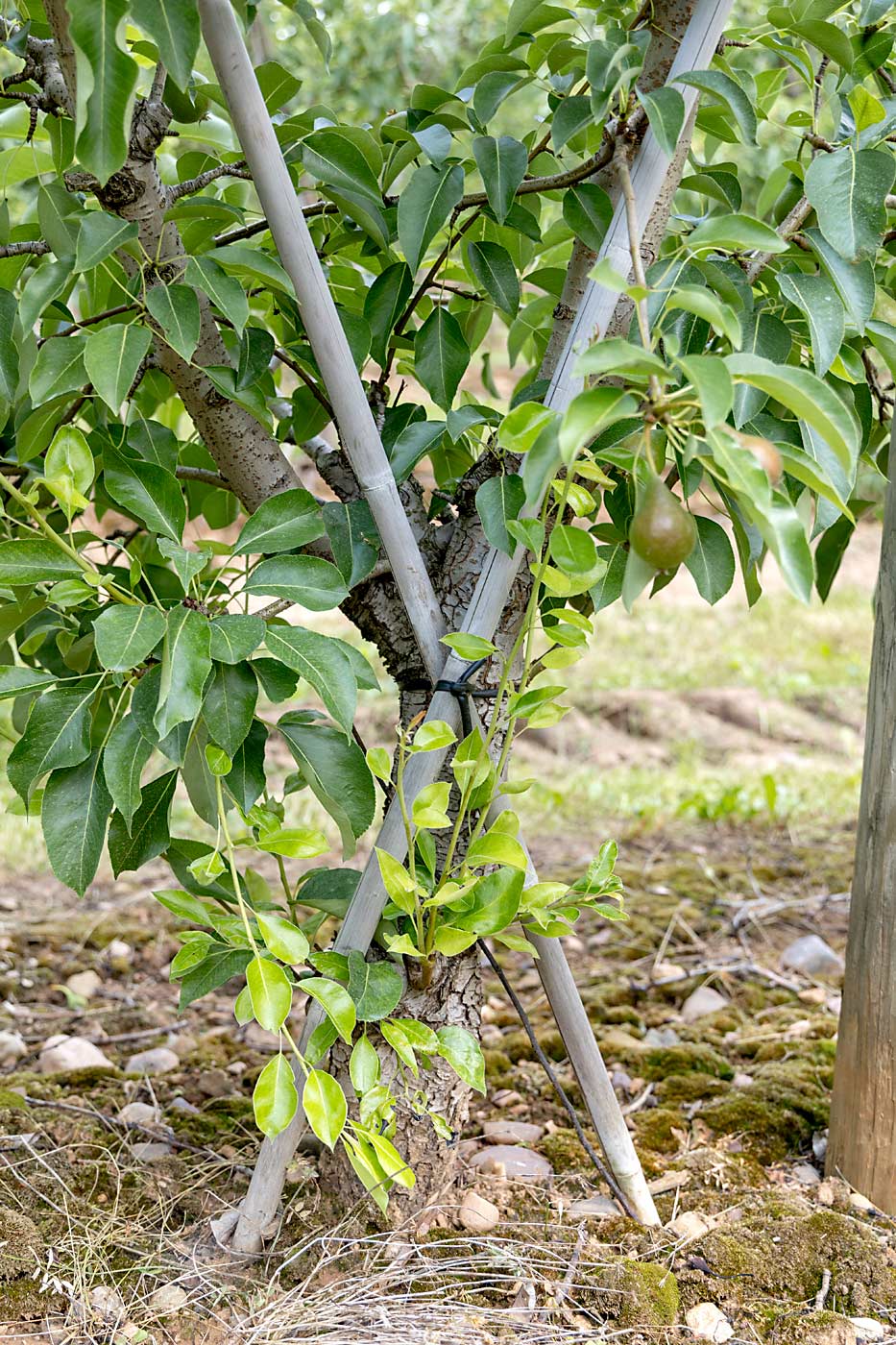
Fire blight, the traditional enemy of Eastern pears, has been a widespread problem in Nova Scotia orchards ever since Hurricane Arthur spread it throughout the province in 2014. But it hasn’t yet hit their pears, Jenereaux said, and they hope to keep it that way.
“We spray religiously for fire blight,” she said.
Pear psylla isn’t a major problem, either, as long as they keep up with their sprays.
The farm’s employees like picking pears because they don’t have to clip stems or worry too much about fruit appearance. Bosc, for example, is already brown, so russeting isn’t as much of a problem, she said.
Pruning, thinning and spraying pears requires a different mindset than apples. Jenereaux is still figuring out the best way to dormant-prune her pear trees, which don’t respond to pruning the same way apple trees do.
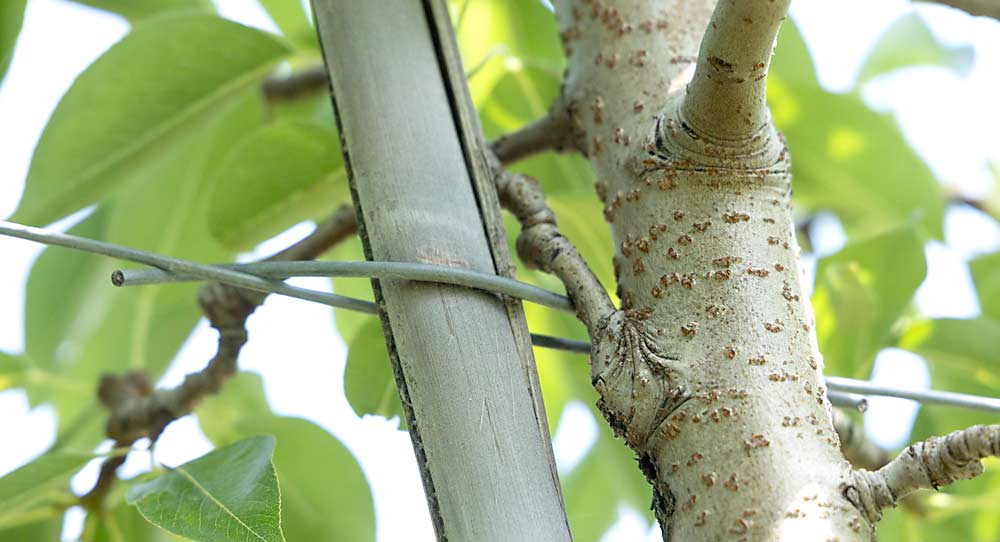
“Now that the trees have settled down, I think we’re on the right path,” she said. “As long as I’m getting fairly good crops on them, it’s OK.”
Spraying 5 acres of pears amid 100 acres of apples can be a pain, however.
“A lot of the sprays that we use for apples we cannot use for pears, at least in Canada,” she said. “So that means I’ve got to fill up a separate tank to come in and spray the pears.”
Thinning poses a challenge, too. Chemical options are limited, and they don’t have time to hand thin. Fortunately, pears tend to size up well on their own.
Jenereaux said if she ever planted pears again, she would choose more precocious rootstocks.
“But I don’t plan to plant pears ever again, so it’s not a big issue,” she said with a laugh.
As much as she likes pears, she won’t plant more because they harvest at the same time as Honeycrisp and Gala. (They keep Galas on the trees longer to size them up.)
“I enjoy having pears on the farm,” Jenereaux said, “but it just collides with everything else going on in the apple world.”
—by Matt Milkovich

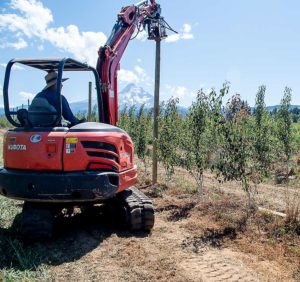





Leave A Comment